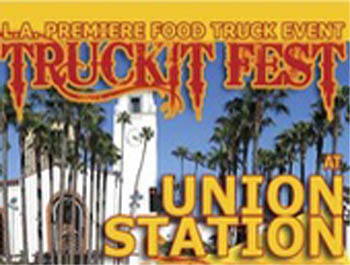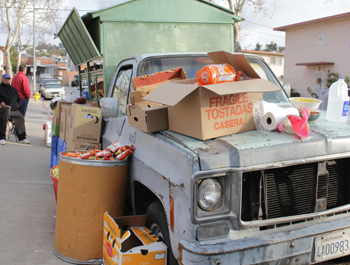Listen to an audio story by Annenberg Radio News:
—–
Food trucks are everywhere these days, providing Angelenos with a good meal on the go on almost every corner. But local event coordinator Phillip Dane saw these trucks as a great business opportunity.
“If you have 40 trucks and each one of them has 2,500 people following them on Twitter, it’s almost a no-brainer to get them all involved,” Dane said.
 Dane had the idea for TruckIt Fest, which is a monthly gathering of food trucks where locals can come and sample all the tasty food in one place. As soon as he started advertising, he knew he was onto something.
Dane had the idea for TruckIt Fest, which is a monthly gathering of food trucks where locals can come and sample all the tasty food in one place. As soon as he started advertising, he knew he was onto something.
“I’ve got more truck applications than I do space for trucks,” Dane said. “Let’s put it that way so I kind of had my pick of trucks for TruckIt Fest.”
The inaugural festival was held March 6 at Union Station. The festival cost $5 for admission. In addition to the trucks, the festival featured live bands, DJs and craftspeople selling their goods. More than 5,000 people attended.
Danny Kim of the Krazy BBQ truck said he saw big gains from participating.
“It was better than a normal day of course,” Kim said.
Soap vendor Lillie Baca says even though her soaps weren’t the main attraction, she is already seeing benefits from participating in the festival.
“I’ve had opportunities pop up because my product is on their website, so I’m getting a lot of exposure as a vendor.”
Dane says he hopes people see TruckIt Fest as a new, fun way to spend their weekend.
“You go in, you can listen to four different bands, you can explore Union Station, which is beautiful,” Dane said. “Since you have a wristband, you’re not locked into the place, and you can actually walk across the street and go downtown and come back. You could actually eat breakfast, lunch and dinner there if you really wanted to.”
The next TruckIt Fest is scheduled for April 3 at Union Station, and Dane says he is planning on having them until at least 2012.















